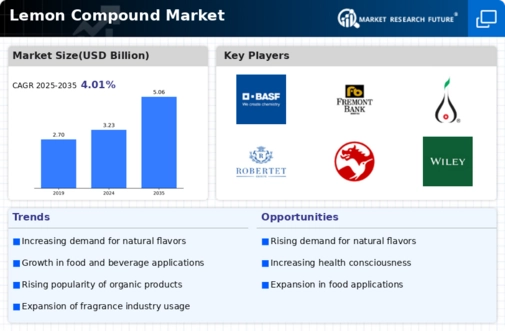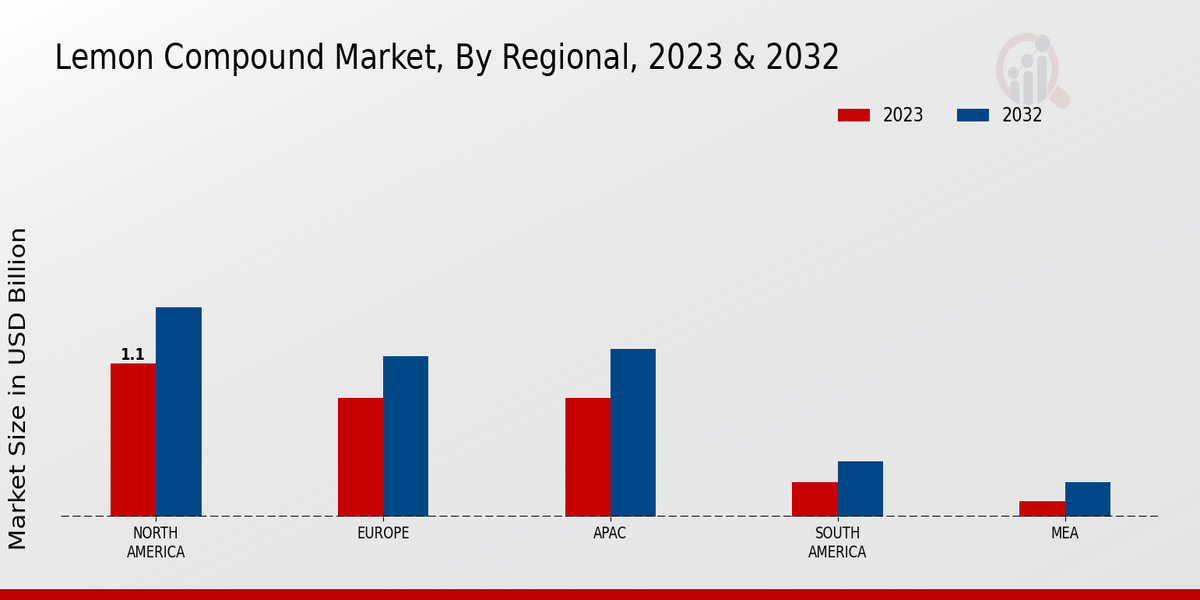Market Growth Projections
Health Benefits of Lemon Compounds
The Global Lemon Compound Market Industry benefits from the recognized health advantages associated with lemon compounds. These compounds are known for their antioxidant properties, potential anti-inflammatory effects, and ability to support digestive health. As consumers become more health-conscious, the demand for products containing lemon extracts is likely to rise. This trend is evident in the beverage sector, where lemon-infused drinks are marketed as health boosters. The market's growth trajectory suggests a potential increase to 5.06 USD Billion by 2035, driven by the ongoing emphasis on health and wellness.
Rising Demand for Natural Ingredients
The Global Lemon Compound Market Industry experiences a notable increase in demand for natural ingredients across various sectors, including food and beverages, cosmetics, and pharmaceuticals. Consumers are increasingly seeking products that contain natural and organic components, which enhances the appeal of lemon compounds. This trend is particularly evident in the food industry, where lemon flavoring is favored for its refreshing taste and health benefits. As a result, the market is projected to reach 3.23 USD Billion in 2024, reflecting a growing preference for natural flavors and ingredients in consumer products.
Growing Popularity of Functional Foods
The Global Lemon Compound Market Industry is witnessing a surge in the popularity of functional foods, which are designed to provide health benefits beyond basic nutrition. Lemon compounds, with their rich vitamin C content and potential health-promoting properties, are increasingly being incorporated into functional food products. This trend aligns with consumer preferences for foods that support overall health and wellness. As the market adapts to these changing consumer demands, the incorporation of lemon compounds into functional foods is expected to drive significant growth, contributing to the projected market value of 5.06 USD Billion by 2035.
Expansion of the Food and Beverage Sector
The Global Lemon Compound Market Industry is significantly influenced by the expansion of the food and beverage sector. As the global population continues to grow, the demand for diverse food products increases, leading to a higher utilization of lemon compounds in flavoring and preservation. The versatility of lemon compounds allows them to be incorporated into a wide range of products, from sauces to desserts. This expansion is expected to contribute to a compound annual growth rate of 4.17% from 2025 to 2035, indicating a robust market outlook as manufacturers seek innovative ways to enhance flavor profiles.
Innovations in Food Processing Technologies
The Global Lemon Compound Market Industry is positively impacted by advancements in food processing technologies. Innovations such as cold-press extraction and advanced distillation techniques enhance the quality and yield of lemon compounds, making them more accessible to manufacturers. These technologies not only improve the efficiency of extraction processes but also preserve the natural flavors and health benefits of lemons. As a result, the market is likely to see increased adoption of lemon compounds in various applications, further driving growth and expanding product offerings in the coming years.












